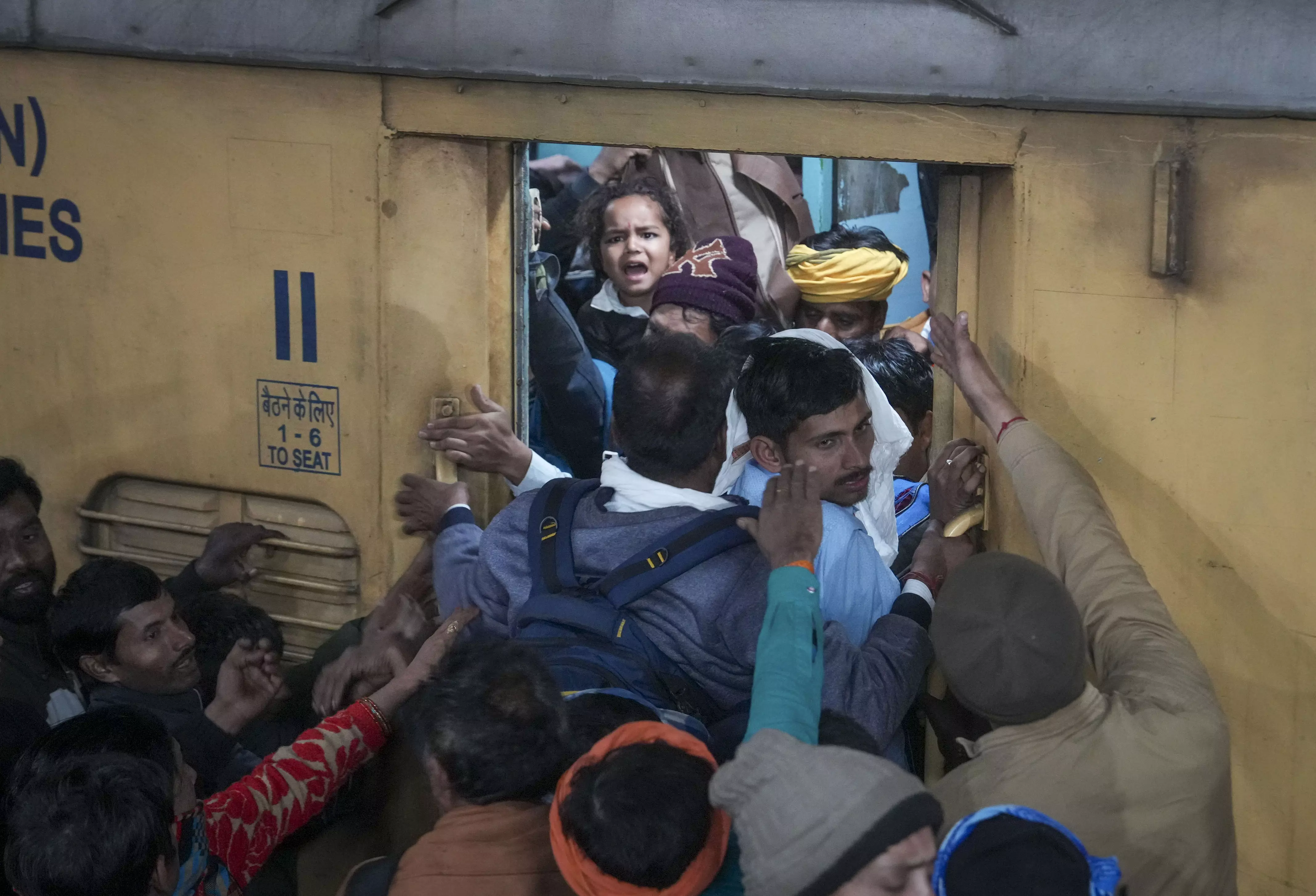Lessons unlearnt
Stampedes regularly take place in India; how are we sidestepping rules and where are we going wrong?

What causes stampedes? Panic, fear, and most importantly, unpreparedness. When you live in a country as populous as India, you are forced to relinquish personal space. In almost all our daily movements, we bump into our fellow travellers or neighbours. Our cities are crowded, transport bursts at the seams, every momentous event is a confluence of people who show up in numbers many times the capacity of a venue. If you’re living in Indian cities, you’re almost always “jostling” with the crowd. Space comes at a premium for the affluent or the blessed, while the majority is born into cramped spaces. And given that our population will, in all likelihood, stay ahead in numbers; a good bandobast should be the foundation of all our public activities.
You’d think that after countless instances of man-made crowd control disasters, we would have learnt a lesson or two, but sadly here we are again discussing yet another mishap. The Maha Kumbh Mela is the “it” event this year, with people cutting across social groups making a beeline to bathe in holy waters. Hailed as one of the largest religious gatherings in the world, the Kumbh Mela demands massive arrangements. This once-in-12-years extravaganza has so far received over 50 crore people and generated business worth Rs 3 lakh crore (USD 360 billion). Ample business and earnings opportunities have opened up for the state government, corporates, and hopefully, for small businesses and the common people. Managing the teeming multitudes for an event of this magnitude is no mean feat. Unfortunately, given the sheer volume of footfall, stampedes here have been common — almost 800 people lost their lives in the Kumbh Mela of 1954 while 42 died in the one in 2013. The stampede in January caused the death of 30 people and injured 90. Last week, another stampede occurred at the New Delhi Railway Station killing 18 people, mostly women and children, who were waiting to catch a train to Kumbh.
Perhaps the single largest cause for stampedes is permitting overcapacity. More than the requisite number of people are allowed to congregate. Take the New Delhi Railway Station incident for instance — purportedly excess tickets were sold (a common practice by the Indian Railways) that in this case, caused enormous gatherings on the platforms. Why do you think railways do this? In order to make the sale, of course. Same reason that perhaps airlines are also selling more tickets on a flight route than seats and then scrummaging to offload volunteer passengers. The leading factor will still be our culture of cutting corners, doing jugaad, and bending laws at will. We must enforce rules and laws; they are there for a reason and it’s not okay to sidestep them. Even something as commonsensical as not driving on the wrong side has to be spelled out to our citizens; where two different announcements can cause stampedes (as seen in the Delhi one). I don’t mean to pontificate but ours is a semi-literate nation that must depend on constant guidance. We have to instill careful thought and planning into our administration and governance, then implement those rules, till they become second nature to our people. As our nation grows at a breakneck pace, our lives too will move with agility. We need a change of mindset before the control gets away from us.
I concur that managing anything in India is an uphill task. While our population’s buying power is a boon, on some fronts, we are disadvantaged by the same populace. Getting us to follow the rules, drive in our lane, respect regulations, not spit in public places, and so on, can be frustrating. But can we not learn? Can’t we change? The human spirit is resilient; adapting and picking up new skills and tricks is an age-old ability. This quality is not limited to non-Indians; heavily populated China has done this before us; many other nations have handled crowd-heavy events through sensible crowd management methods. India too continues to manage overcrowded concerts, cricket matches, religious jamborees such as Durga Puja celebrations — but we fumble too. Stampedes take place overseas too but are unlikely to be repeated. India is clearly leading in the number and frequency of stampedes. We make mistakes, pay a heavy price in human cost, but just don’t learn.
The writer is an author and media entrepreneur. Views expressed are personal



